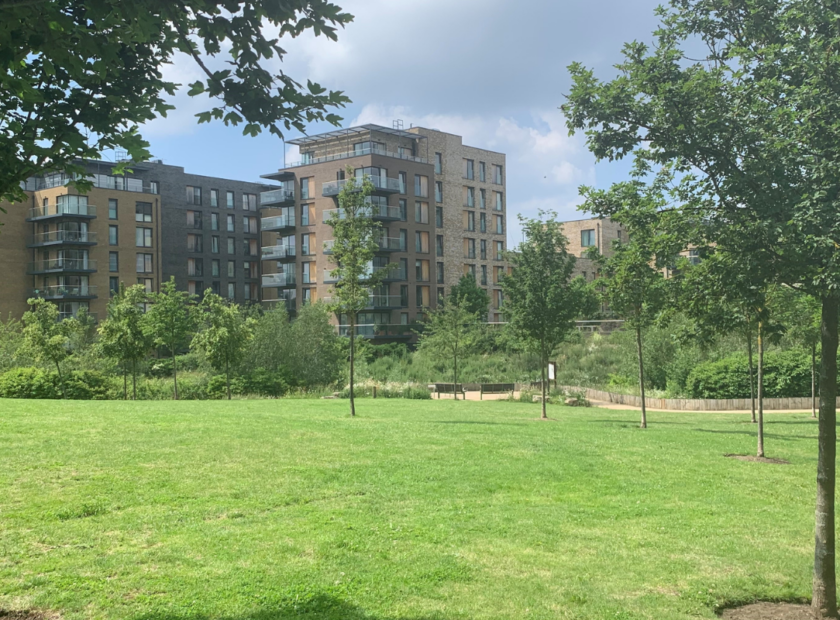The “radical reforms” proposed for the planning system in England last week are framed by a view of planning as an outdated blockage to the development we need to “build back better” from the economic impacts of COVID-19.
As a group of planning academics and researchers, we are deeply concerned that this agenda has been driven by ideologically-motivated free-market think tanks and self-interested property lobbies rather than sound evidence.
In The Wrong Answers to the Wrong Questions published on the TCPA website today we set why the government is wrong, how many of their key claims fly in the face of that evidence and ignore significant tensions and trade-offs involved in the development of land.
In particular, we present a critical review of five key claims that underpin the reform agenda:
1. The government is wrong to say the planning system is responsible for the housing crisis
The claim: The government claims that the planning system acts as a major constraint on development and blames it for the existence of the housing crisis.
The reality: Around 90% of applications for planning permission are approved in England. Consent has been granted for between 800,000 to 1,000,000 new houses that remain unbuilt. Rather than the Soviet-era anachronism described by think tanks, the planning system in England is already permissive and more than capable of supplying land to the market. The failure to build new housing is not a result of excessive state regulation, but of dysfunctional markets and a failure to invest in social housing. Further deregulating the planning system simply will not resolve the crisis of housing affordability.
[For more on this see the contributions by Quintin Bradley, Bob Colenutt, Andy Inch, Kiera Chapman and Malcolm Tait]
2. The government is wrong to suggest that radical simplification will produce a more efficient and effective planning system
The claim: Up to now the English planning system has used a discretionary model of decision-making. This means decisions are made on a case-by-case basis, informed by local plans and planning experts who are democratically accountable to local government. The government has presented this way of working as a major drag anchor on development, claiming that a ‘zonal’ approach based on earmarking land for either ‘growth’, ‘renewal’ or ‘protection’ would work better. Under this change, local plans will effectively determine rights to develop, theoretically removing the need to negotiate over individual developments. Government argue this will simplify the process of gaining development consent, offering greater certainty to developers and communities. They also propose to switch from a qualitative document-driven system to a quantitative data-driven one, arguing that this standardization will make planning more efficient and modern.
The reality: The government is overstating the costs of discretionary decision-making and the benefits of zoning. Evidence from other countries with zoning systems in place suggest that they do not necessarily improve efficiency or outcomes, and that they can lead to bad decisions because they are inflexible in the face of changing circumstances. Experience in England already shows that simplified planning zones create significant risks for communities and local democracy, and don’t necessarily provide certainty for developers either. The proposed combination of broad, centrally-defined categories of land use with slimmed-down plans is highly unlikely to work and far removed from international examples of zoning. It fails to acknowledge the variety of complex issues raised by development and the inevitable conflicts they generate between different interest groups. Our existing discretionary planning system is far from perfect but it’s not the real problem here. At its best it offers a flexible and democratically accountable way of balancing the needs of developers against those of communities. The introduction of a data-driven process is likely to be used to automate and to privatise parts of the system, further reducing democratic accountability.
[For more on this see the contributions in the report by Philip Booth, Sue Brownill, Edward Shepherd, Alexander Wilson, Geoff Vigar and Mark Tewdwr-Jones, Andy Inch, Kiera Chapman and Malcolm Tait]
3. The government is wrong that more permissive planning will produce better places
The claim: We need a more permissive planning system, so that developers and landowners can change the use of land in response to market signals. The economic benefits of this outweigh the risks.
The reality: These reforms will afford power to the already privileged to pursue development in their own self-interest, irrespective of whether this benefits the wider community. Previous deregulation of planning control (such as granting automatic rights to change the use of buildings) has led to the production of sub-standard housing that lacks basic amenities and is poorly connected to jobs, schools and other facilities. This has exacerbated spatial and health inequalities by creating poor quality living conditions for many of the most vulnerable in society. Further deregulatory measures will exacerbate these problems, creating dysfunctional development and undermining attempts to coordinate public and private investment. Deregulation will create a race to the bottom, lowering quality rather than improving standards.
[for more on this see the contributions in the report by Ben Clifford and Sue Brownill]
4. The government is wrong about the capacity and willingness of the market to build back better
The claim: Freed from the unnatural ‘rationing’ of land by the planning system, the free-market will build back better, and help to ‘level up’ parts of the country that have been left behind over recent decades.
The reality: England already has a poorly resourced and highly permissive planning system, which produces outcomes that favour the interests of property developers. There is no evidence to suggest that a more permissive approach will improve the quality of our built environment or address the inequalities generated by market-led development. Good design, for example, will not result from the automatic application of standardised codes and measures. And good planning is about much more than the design. Building better places requires the strategic coordination of infrastructure investment with high quality development that can unlock its benefits, something the current proposals completely ignore. Failing to plan for this is hugely wasteful and will generate social, economic and environmental costs for future generations.
[for more on this see the contributions in the report by Bob Colenutt, Tim Marshall, Sue Brownill and Michael Edwards]
5. The Government is wrong to say that the reforms will lead to greater democracy and participation in the planning system.
The Claim: participation is restricted by the cumbersome nature of the current system, local democracy and accountability will now be enhanced by technology and transparency.
The Reality: while it is true that digital methods may enable some sections of the population to engage more with planning, this is only part of the story. There are real dangers of digital exclusion in any wholesale move towards e-participation. The proposals in the White Paper also cut in half existing opportunities to engage with the system by removing the public’s right to comment on planning applications and restricting it to plan making and design codes. Experience shows it is only when a proposal is actively being discussed, rather than the plan-making stage, that most people are motivated to engage. Participation restricted to commenting on what buildings look like rather than what they are providing and whether this meets local needs is not meaningful. Neighbourhood plans are to be brought more into line with local plans, thereby removing a key current aspect of planning democracy. Finally, these reforms represent a major centralisation of power by central government and it’s redistribution to the private sector; not the general public.
[for more on this see the contributions in the report by Alexander Wilson, Geoff Vigar and Mark Tewdwr-Jones, Andy Inch, Kiera Chapman and Malcolm Tait and Sue Brownill]
The Questions We Should Be Asking
Following decades of piecemeal reform and underfunding, our planning system is weak. It lacks the powers it needs to create high quality development. From the tragedy of Grenfell Tower to the scandalous shortage of decent, affordable housing and the looming threat of climate breakdown, there is overwhelming evidence that the prevailing model of light-touch regulation and market-driven change has failed.
Rather than less planning, we need more. To build a better, more democratic future, we need to strategically integrate investment, coordinate development, and ensure high-quality outcomes. Of course, there are costs to such a system but the wider public benefits are potentially immense. A period of significant public investment offers huge opportunities to tackle some of the biggest challenges we face as a society: the crises of decent, affordable housing, physical and mental health, climate change, and social inequality. A more positive planning reform agenda could play a crucial part in these vital tasks.
This blog post is based on the executive summary of the report. You can read the full report here



